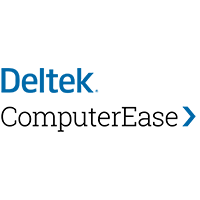
1️⃣ General Ledger & Chart of Accounts Setup
✅ Define your chart of accounts (COA)— Set up accounts to track income, expenses, assets, liabilities, and equity.
✅ Create cost categories—organize expenses by materials, labor, equipment, subcontractors, and overhead.
✅ Automate bank reconciliation—Set up bank feeds and reconciliation schedules to track cash flow.
🎯 Outcome: A structured financial foundation for tracking all construction-related costs.
2️⃣ Job Costing Workflow
✅ Set up a job cost structure—assign unique job numbers and phases for easy tracking.
✅ Define cost codes—Use industry-standard cost codes (e.g., CSI codes) to categorize expenses.
✅ Enable real-time cost tracking—Integrate with accounts payable, payroll, and purchase orders.
✅ Configure WIP tracking—automate work-in-progress (WIP) reporting to monitor project profitability.
🎯 Outcome: Accurate job costing ensures profitability tracking and prevents overruns.
3️⃣ Accounts Payable (AP) & Purchase Order (PO) Workflow
✅ Set up vendor management—store vendor details, W-9s, and insurance documents.
✅ Automate approval workflows—Require manager approval for invoices over a set limit. ✅ Integrate purchase orders (POs)—Link POs to jobs for real-time tracking.
✅ Enable retainage tracking—Ensure retainage is properly deducted and paid on time.
✅ Automate lien waiver collection—Ensure vendors provide lien waivers before final payments.
🎯 Outcome: Avoids duplicate payments, ensures proper cost tracking, and improves cash flow.
4️⃣ Accounts Receivable (AR) & Billing Workflow
✅ Set up progress billing—Enable AIA-style (G702/G703) billing for long-term projects.
✅ Automate retainage invoices—Track retainage amounts separately and set reminders for collection.
✅ Enable time & material (T&M) billing—Track labor, material, and equipment costs per job for accurate billing.
✅ Configure invoice reminders—automate follow-ups for unpaid invoices.
🎯 Outcome: Faster collections, reduced disputes, and improved cash flow management.
5️⃣ Payroll & Certified Payroll Workflow
✅ Set up payroll processing—Configure multi-state payroll, prevailing wage, and union pay rates.
✅ Enable job-costed payroll—Allocate labor costs to specific projects and cost codes.
✅ Automate certified payroll reports—Generate Davis-Bacon compliance reports for government projects.
✅ Enable workers’ compensation tracking—Assign labor codes for accurate insurance calculations.
✅ Direct deposit integration—Ensure seamless payment to employees.
🎯 Outcome: Compliant and efficient payroll processing with accurate labor cost tracking.
6️⃣ Subcontractor & Compliance Workflow
✅ Store subcontractor data—track insurance certificates, W-9s, and licensing.
✅ Enable progress payment approvals—Ensure subcontractors are paid only for completed work.
✅ Automate lien waiver collection—Require lien waivers before issuing final payments.
✅ Track retainage & back charges—Deduct for incomplete work or damages when necessary.
🎯 Outcome: Minimized risk and smooth subcontractor management.
7️⃣ Reporting & Dashboard Setup
✅ Configure custom job cost reports – Generate profitability reports per project.
✅ Set up cash flow forecasting – Predict future financial needs based on billing cycles.
✅ Automate WIP reporting – Ensure accurate revenue recognition for long-term contracts. ✅ Enable budget vs. actual analysis – Monitor cost overruns and adjust strategies accordingly.
🎯 Outcome: Data-driven decision-making for better financial planning.
8️⃣ Mobile & Field Access
✅ Enable mobile time tracking—Allow field workers to log hours remotely.
✅ Set up remote expense tracking—Capture job-site expenses with receipt uploads.
✅ Enable field purchase approvals—Let project managers approve POs from their phones.
✅ Enable daily field reports—Automatically generate job progress reports from the field.
🎯 Outcome: Increased visibility, efficiency, and faster approvals.
🚀 Final Steps: Optimizing & Automating Workflows
🔹 Train staff on best practices—Provide training to employees to maximize software utilization.
🔹 Monitor & refine workflows—Review reports regularly and adjust processes for efficiency.
🔹 Ensure compliance—automate reporting to meet tax, labor, and government contract requirements.
🔥 Need Help Configuring Workflows in ComputerEase?
We can assist with:
✅ Workflow customization to fit your company’s needs.
✅ Automation strategies to reduce manual entry.
✅ Best practices for reporting & compliance.
✅ Integration with payroll, banking, and project management tools.
